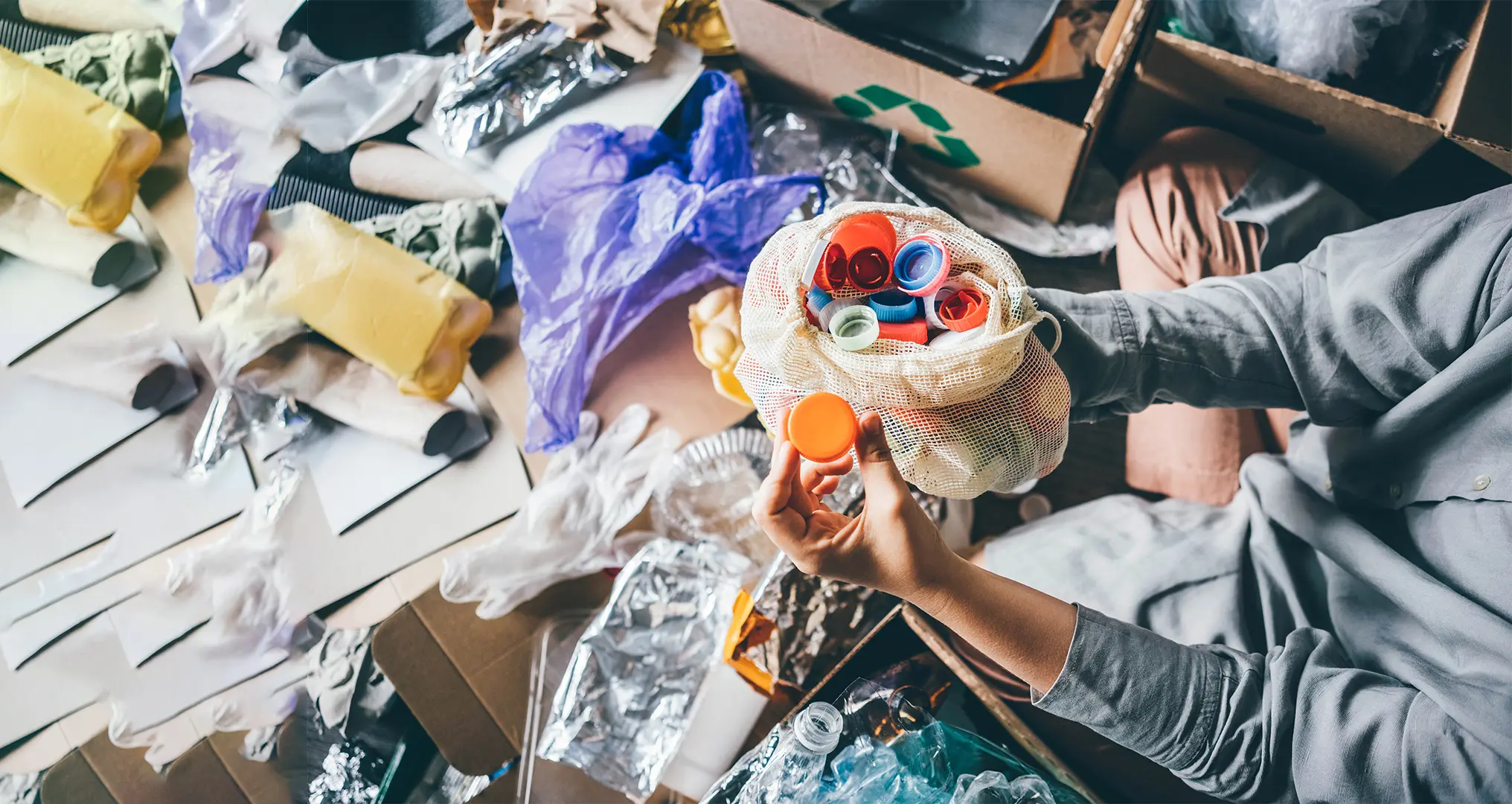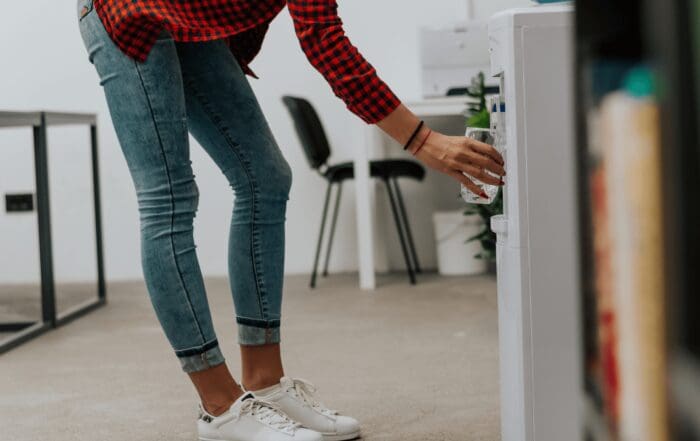
Why Plastic Waste is Hard to Avoid
As people who care about the environment, we probably all know that plastic waste is one of the biggest problems that we face today. From bags to bottles, from packaging to toys, plastic seems to be everywhere we look. We can’t seem to escape it, whether we’re at home or in the office. So, we try our best to mitigate our usage, recycle where we can, and reuse the things we have. But despite our best efforts, why do we still see so much plastic waste in our daily lives? It’s a great question, and Artesian Bottleless Water is here to explain why plastic waste is so hard to avoid.
Understanding Different Types of Plastic and Their Uses
Plastics play a pervasive role in our daily lives, and it’s due to the various types available, each with its unique properties and uses. The diverse range of plastics is categorized into seven main types:
Polyethylene Terephthalate (PET, PETE, or Polyester)
This is the most common type of plastic. You can find PET in everyday items like beverage bottles, food packaging, synthetic fibers, and much more. Its popularity stems from its safety, lightweight nature, and recyclability.
High-Density Polyethylene (HDPE)
Known for its strength and durability, HDPE is used in heavy-duty items such as milk jugs, laundry detergent bottles, and garbage bins. It is also safe and highly recyclable.
Polyvinyl Chloride (PVC)
PVC is versatile and can be flexible or rigid, which makes it an ideal material for everything from pipes and cables to vinyl records and credit cards. However, it’s considered less safe due to its potential chemical leaching.
Low-Density Polyethylene (LDPE)
LDPE is flexible and resistant to moisture. This makes it perfect for plastic bags, food wraps, and squeezable bottles.
Polypropylene (PP)
Recognized for its high melting point, PP is commonly used in containers designed for hot liquids, diapers, and car parts.
Polystyrene or Styrofoam (PS)
Known for its lightweight and insulation properties, PS is used in products like disposable coffee cups, take-out food containers, and packing foam. It’s not commonly recycled, making it problematic for the environment.
Other (mixed)
This category includes all other types of plastic, including Polycarbonate (PC), Polylactic Acid (PLA), and others. These are used in a variety of products, from baby bottles to compact discs. This is also the same plastic used to make those 3- and 5-gallon jugs.
Each type of plastic serves a specific purpose, but its omnipresence contributes to the extensive plastic waste problem we face today.
Why We Can’t Seem to Move Away from Plastic
Convenience
One of the main reasons why plastic waste is hard to avoid is the convenience it provides. We’ve grown so accustomed to single-use plastics, from straws to utensils, that it’s difficult for us to imagine our lives without them. The convenience of plastic items has become a norm in our fast-paced, disposable society. However, that convenience comes at a cost to our environment. To truly make a change, we need to think beyond our convenience and prioritize the health of our planet.
Lack of Awareness
Most of us are not aware of the impact of our daily plastic consumption on the environment. We might know about the Great Pacific Garbage Patch, but we are unaware of the effects on wildlife and the larger ecosystem. Further, we don’t realize that plastic waste takes hundreds of years to decompose completely, leaving microplastics in the water and soil that can cause harm to flora and fauna. Raising awareness can make people more informed and thereby help curb plastic usage.
Cost
Many eco-friendly alternatives to plastic items tend to be more expensive and out of reach for some businesses. Therefore, the financial barrier is a significant challenge to overcome when discussing eco-friendly alternatives to plastic waste, especially in the workplace. To address this issue, we need more affordable solutions and more inclusive measures that can reach everyone.
Recycling Challenges
Recycling provides a way to manage existing plastic waste, but it is not a perfect solution. There is a lack of knowledge about what can or cannot be recycled, and sometimes, recycling ends up in landfills because contaminated trash increases the cost of recycling. To encourage more recycling, local governments and organizations could provide tax incentives, speedier collection services, and better public education.

The Power of One
As an individual, it’s easy to think that what we do won’t make a difference. But that’s not true. Our choices may seem insignificant, but collectively, they can create a positive impact. Avoiding single-use plastics, bringing reusable bags, and supporting other companies that use recyclable materials are just a few small steps that we can take. You can also join clean-up drives, or they can urge local authorities to invest in cleaner and more efficient waste management systems. Individual actions can make a significant difference.
Practical Ways to Reduce Plastic Waste in the Office
Reducing plastic waste in the office does not have to be a daunting task. With a few changes to our habits and routines, we can significantly lower the amount of plastic we consume and dispose of on a daily basis. Here are some practical ways to achieve this:
- Bring Your Own Water Bottle and Coffee Cup: The majority of plastic waste in any office comes from single-use bottles and coffee cups. By simply bringing your own refillable water bottle and coffee cup to work, you can significantly reduce the amount of plastic waste you produce.
- Use Digital Platforms Instead of Plastic Stationery: Encourage the use of digital note-taking applications and online sharing platforms to reduce the need for plastic-based stationery items such as pens, folders, and binders.
- Encourage a ‘Bring Your Own’ Culture: Promote a culture where employees bring their own lunch in reusable containers rather than buying take-out that often comes in plastic packaging.
- Replace Plastic Cutlery with Reusable Options: Swap out plastic spoons, forks, and straws in your office kitchen with metal or biodegradable ones.
- Set Up a Recycling Station: Not all plastic waste is avoidable. Setting up a clearly marked recycling station in the office can ensure any necessary plastic items are disposed of responsibly.
- Purchase Bulk Supplies: Buy office supplies in bulk, as they often come in less packaging than individual items. This not only reduces plastic waste but can save money as well.
- Promote Green Office Policies: Implementing a comprehensive green office policy that includes reducing plastic waste can help create a culture of sustainability within your office.
Remember, every small step counts. If each of us takes action, together, we can make a monumental impact on reducing plastic waste.

Together, We Can Stop Plastic Waste
To truly curb plastic waste, we need to be mindful, informed, and proactive. We have to be willing to step out of our comfort zones and prioritize the health of our planet. Challenges such as convenience, a lack of awareness, cost, recycling challenges, and individual action all play a part in affecting the level of plastic waste in our environment.
If becoming more eco-friendly is on the agenda for your company in 2024, Artesian Bottleless Water has a great solution. Our bottleless water and ice coolers not only eliminate the use of plastic water bottles and jugs in your company, but they also provide better-tasting, cleaner drinking water. It’s a win-win for everyone!
Have questions? We’d love to answer them. Contact an Artesian office near you and start a free 7-day trial on any of our units.



